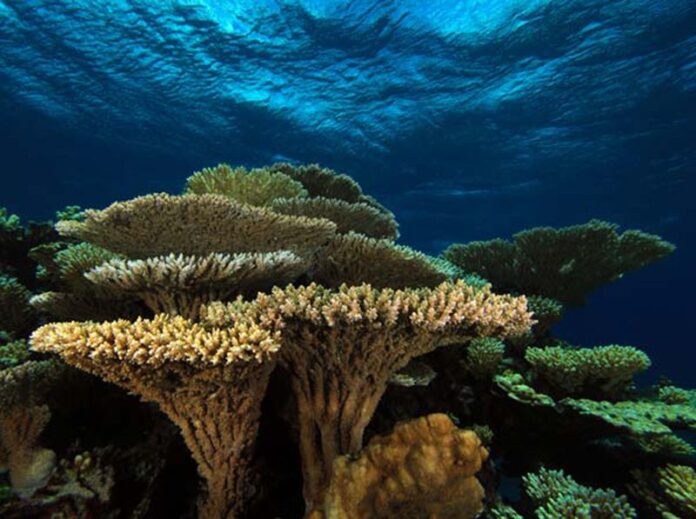Covering just a single percent of the sea depths, the reefs are home to an expected 25 percent of the world’s marine species, from fish to wipes. Practically the world’s all’s coral reefs, particularly the biggest reefs, is situated in the jungles. As you will peruse, the Great Barrier Reef is the biggest on the planet in both length and region.
You can learn more here
What Is A Coral Reef?
A coral reef is a lowered marine design comprised of various polyps. Polyps are little marine spineless creatures that can’t move. These sessile or inactive creatures structure states with different corals and ties themselves together to shape a reef by discharging calcium carbonate. This hard substance is additionally tracked down in many rocks and minerals.
Corals and green growth have a commonly useful or cooperative relationship. Green growth, which is safeguarded in coral, makes up most of the food eaten by the reef. Each inactive creature that is important for a reef has an inflexible exoskeleton that adds to its solidarity and rock-like appearance, however, the green growth underneath the surface gives every polyp its tone.
Coral reefs differ significantly in size and type, however, all are profoundly delicate to changes in water. Water properties, for example, temperature and substance creation decide the soundness of the stone. Blanching, the brightening and crumbling of coral reefs, happens when the hued green growth residing in polyps pass on their coral homes because of expanded water temperature as well as acidity.
You can learn more about the 12 Different Types Of Lavender
World’s Biggest Coral Reef
Coming up next is a rundown of the nine biggest coral reefs on the planet arranged by size. Since numerous hindrance reefs are long ovals, most coral reefs are estimated by length. The three keep-going or the littlest reefs on this rundown are estimated by region in light of their strange shape.
Incredible Barrier Reef
Length: 1,553 miles (2,500 km)
Area: the Coral Sea off the bank of Australia
The Great Barrier Reef Marine Park is a safeguarded public park in Australia. The actual reef is sufficiently huge to be seen from space. The reef is home to 400 types of coral, 1500 types of fish, and 4000 types of mollusks. The Great Barrier Reef is important to the entire world as it covers numerous almost terminated types of amphibian creatures.
Red Ocean Coral Reef
Length: 1,180 miles (1,900 km)
Area: Israel, Egypt, and the Red Sea close to Djibouti
Corals in the Red Sea, particularly those tracked down in the northernmost piece of Eilat or the Gulf of Aqaba, are stronger than most. They are frequently read up for their capacity to endure high water temperatures.
New Caledonia Barrier Reef
Length: 932 miles (1,500 km)
Area: the Pacific Ocean close to New Caledonia
The variety and magnificence of the New Caledonia Barrier Reef procured it a put on the UNESCO World Heritage Sites list. This reef is significantly more different in species count than the Great Barrier Reef, including undermined species.
Mesoamerican Obstruction Reef
Length: 585 miles (943 km)
Area: the Atlantic Ocean close to Mexico, Belize, Guatemala, and Honduras
The biggest reef in the Western Hemisphere, the Mesoamerican Barrier Reef is otherwise called the Great Mayan Reef and is important for a UNESCO site that likewise incorporates the Belize Barrier Reef. This reef is home to 500 types of fish, including whale sharks and 350 types of mollusks.
Florida Reef
Length: 360 miles (579 km)
Area: the Atlantic Ocean and Gulf of Mexico close to Florida
The Florida Reef is the main coral reef in the United States. The reef is assessed to be valued at $8.5 billion to the state’s economy, however, it is quickly crumbling, quicker than researchers assessed because of sea fermentation. It reaches out into the Gulf of Mexico outside the bounds of its home in the Florida Keys National Marine Sanctuary.
Andros Island Barrier Reef
Length: 124 miles (200 km)
Area: the Bahamas among Andros and Nassau Islands
The Andros Barrier Reef, home to 164 marine species, is renowned for its profound water wipes and enormous populaces of red snapper. It sits on the edge of a profound channel called the Tongue of the Ocean.
Saya De Malha Bank
Region: 15,444 square miles (40,000 sq km)
Area: Indian Ocean upper east of Madagascar
The Saya de Malha Bank is essential for the Mascarene Plateau and elements the biggest ceaseless bed of seagrass on the planet. This ocean grass covers 80-90% of the area and coral covers another 10-20%. This rock is more adjusted in shape than most lengthy, curved reefs, which is the reason it is frequently estimated by region as opposed to length.
Incredible Chagos Bank
Region: 4,633 square miles (12,000 sq km)
Area: Maldives
In 2010, the Chagos Archipelago was formally assigned a Protected Marine Area, keeping it from economically fishing. This ring-molded rock in the Indian Ocean was not concentrated widely until ongoing years. In 2010, a mangrove backwood was found. The Great Chagos Bank is the biggest atoll or lace-like circle of coral reefs on the planet.
Reed Bank
Area The South China Sea (guaranteed by the Philippines yet questioned by China)
During the 2010s, China began developing islands upon reefs in the South China Sea in the Reed Bank area to expand its territory over the Spratley Islands. Oil and flammable gas stores, too as Chinese military stations, can be found on this wide table mount.



